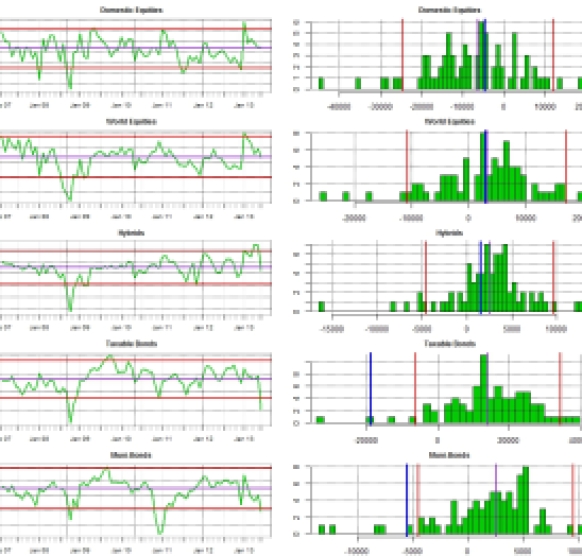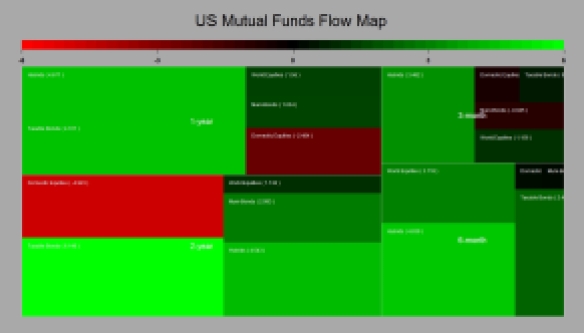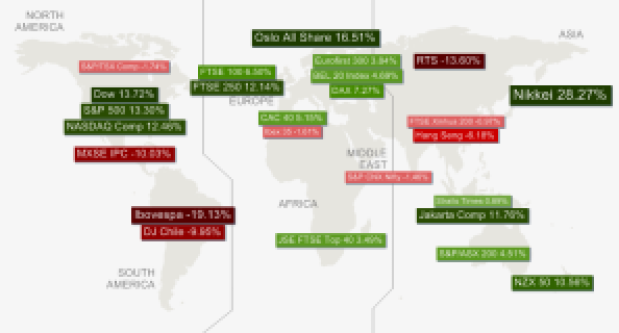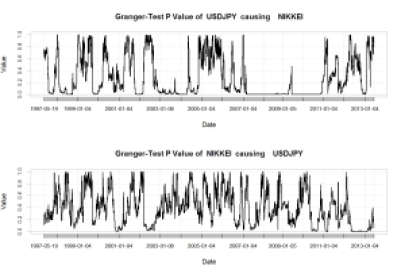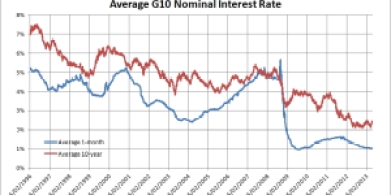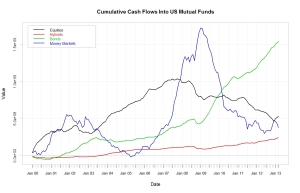Ok yesterday’s call on the VIX was great , no need to say thank you. Anyhow I thought it would be timely to look at the Investment Company Institute data and that it would be interesting to visualise the data and to look at the effect of risk on investors preferences for the assets classes in time of market stress. The following show the inflows/outflows in bonds, equity and hybrid US mutual funds. Quite clearly Mr Bernanke speech dented the appetite for bond products but despite appetite for equity product abating it did not really substantiate significant outflows there. The charts below show the monthly inflows / outflows relative to their median and a 95% interval of confidences. The charts on the right just give a distributional representation of the monthly data.
The chart below shows the T-Stat (i.e. the level of significance) of the inflows across 4 different time periods. The outflows in bonds switched to negative over the last 3 months but equities and particularly holdings in international have hedl well.
In the below I used a bit of code wizardry to look at what happen when market risk increases. I use the VIX as my risk metric. When markets went “postal” in October 2008 it was quite clear then US equities suffered the most outflows but the bond market remained quite resilient as the fed came to the rescue.
Clearly the financial volatility has not reached levels experienced in the last quarter of 2008 and there is clearly no dislocation of the financial system this time. So no reason to panic. The chart below shows the Bonds were the main recipient of the market aversion but all this is very tame by any means.
My thought is that as the market normalise and comes to terms with the Fed policy we will see further sell off in the bond markets and that the proceeds will be reinvested in the equity markets as the shift in the Fed monetary policy will be driven by better economic fundamentals….no need to go into cash this time….

